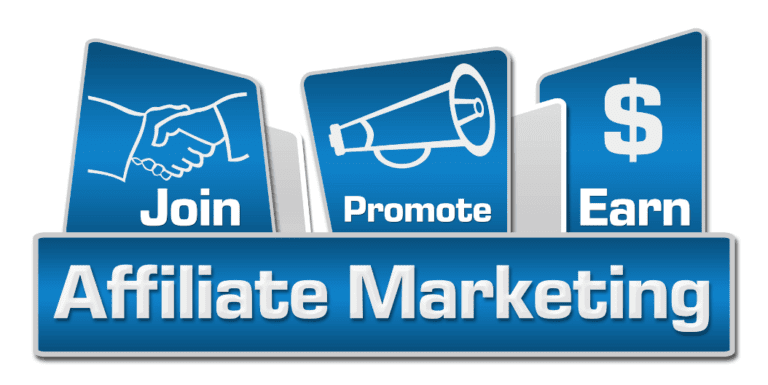What is Email Marketing Strategies? How to Create one
Email marketing can be a powerful way to reach your target audience and boost your business results. However, it’s not as simple as sending a blast email and expecting customers to flock to your website. You need to use proven, effective strategies to take your email marketing campaigns to the next level. In this blog post, we will discuss some of the most effective email marketing strategies you can use to get better campaign results.
What is email marketing?
Email marketing is a digital marketing strategy that employs email to promote and sell products or services. It can cultivate relationships with potential and existing customers, build brand awareness, generate leads, or drive sales.
Email marketing is one of the most effective ways to reach your target audience, and you can customize it to individual needs and preferences. In addition, email marketing is relatively inexpensive and easy to set up, making it an ideal choice for businesses of all sizes. Email marketing can be a powerful tool in your digital marketing arsenal if you’re looking to increase brand awareness or drive sales.
what is an email marketing strategy?
An email marketing strategies is a set of guidelines a marketer chooses and adheres to to accomplish specific marketing objectives using email advertising. This strategy provides companies with a direct line of communication with potential clients and customers for brand promotion.
Types of email marketing strategies?
Email Marketing has been around for a long time and is still one of the most effective marketing tools available. It allows you to reach a large audience with minimal effort and is relatively inexpensive compared to other marketing channels.
There are many different types of email marketing strategies that you can use, and the best approach will vary depending on your goals and audience.
One common method is an email newsletter to keep subscribers up-to-date on your latest products, services, and promotions.
Another popular approach is to employ email to promote special offers or discounts. You can also use email to build customer relationships by sending them helpful tips or information about your industry.
Whatever strategy you choose, email marketing can be an excellent way to reach your target market.
How to Create a Winning Email Marketing Strategy
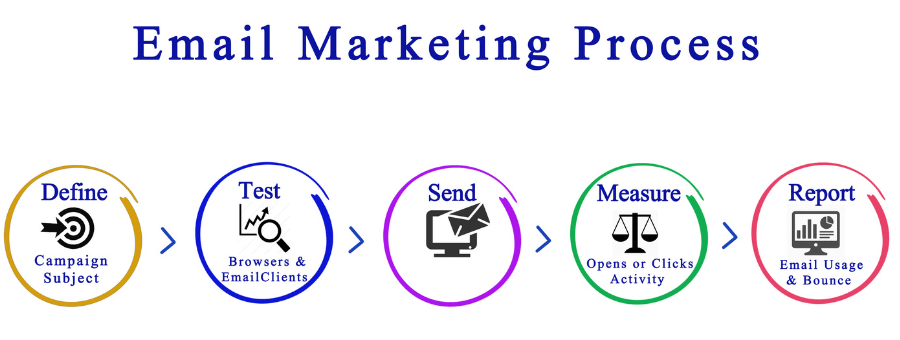
A successful email marketing strategies requires more than just a database of customers or subscribers. To create a campaign that captures attention and drives results, you need to take a holistic approach that considers the different stages of the customer journey.
Here are four steps to creating a winning email marketing strategy:
1. Define your goals
What are you hoping to achieve with your email marketing campaign? Is your goal to increase brand awareness, drive traffic to your website, or generate sales? Once you know what you want to accomplish, you can develop a strategy that supports your goals.
2. segment your audience
Not all subscribers are created equal, so it’s important to segment your list into different groups based on factors like demographics, interests, or past behaviour. It will allow you to send targeted messages more likely to resonate with each group.
3. personalize your messages
For your emails to stand out in a crowded inbox, they must be personal and relevant to the recipient. Be sure to include names and other personal details whenever possible, and customize your content to fit the needs and interests of each subscriber.
4. track your results
Lastly, don’t forget to follow the results of your email marketing campaigns to optimize and improve your results over time continually. By analyzing data like open rates, click-through rates, and unsubscribe rates, you can identify what’s working well and make necessary adjustments to keep your campaigns on track.
By following these steps, you can develop a strategy that will help you achieve your desired results.
13 Effective email marketing strategies to increase sales
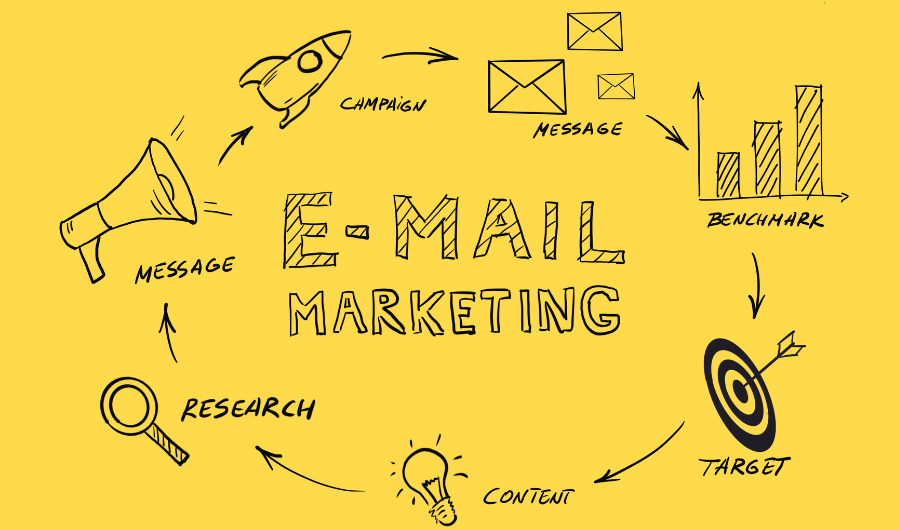
1.Personalize your email without using the recipient’s name
In a day where we are continuously overwhelmed with email marketing communications, making your message stand out can be challenging. One way to do this is to personalise your email without using the recipient’s name. Instead, concentrate on personalising it by bringing up something you know about their interest. For example, if you are emailing a potential customer, you could say that you saw they were recently interested in XYZ product. It shows that you are paying attention and helps to build rapport. Another way to personalise your email is to include a relevant piece of information, such as an upcoming sale or new product launch. By tailoring your message to the recipient, you will be more likely to capture their attention and encourage them to take action.
2.The long and short of subject lines
The impact of a good email subject line cannot be understated. An effective subject line is crucial for getting your message noticed in a world where the average person receives upwards of 120 emails per day. But what makes a good subject line? Generally, the best subject lines are short, specific, and to the point. Concise subject lines are more likely to grab attention than longer ones, and including specific details helps to set your email apart from the rest. That said, there are exceptions to every rule, and sometimes a longer, more descriptive subject line can be just as effective. The important thing is to experiment and find what works best for you and your audience.
3.Prime time to send your email
You know the drill. You’re working hard on an email, eagerly anticipating the response you’ll get from your recipient. But when is the best time to hit “send?” According to a recent study, the answer may depend on what kind of email you’re sending. For periodic messages, early afternoon is generally best. However, for emails that require a quick response, you may want to send them first thing in the morning or late at night. And if you’re hoping to score a meeting with a busy executive, Monday mornings are typically the best time to reach them. So next time you’re wondering when to press “send,” consider the type of email you’re sending and the response you’re hoping to get. With a little planning, you can ensure that your email ends up in the right inbox at the right time.
4.Mobile opens an account for 47 per cent of all email opens.
According to a recent report from Litmus, mobile devices account for 47% of all email opens. It shows that over 50% of emails are open on a smartphone or tablet. As more and more individuals access their email while on the road, this trend will only intensify. The study also discovered that iPhone users open emails more frequently than Android users. Therefore, you must ensure that your email appears well on an iPhone if you’re targeting mobile users. If not, you risk losing out on a lot of potential clients.
5.Send emails on the weekends
The weekend is a time to relax and recharge, but for many of us, it’s also a time to catch up on work. Whether replying to client emails or checking in with our team, it can be easy to let work creep into our free time. However, there are a few good reasons why you should resist the urge to send emails on the weekends:
- It’s important to respect your employees’ free time. If they get work emails on their days off, they will likely feel overwhelmed and overworked.
- Weekends are a great time to disconnect from work and recharge your batteries. You’ll not get the rest you need if you’re constantly checking your email.
- Weekend emailing can lead to burnout.
If you’re always working, you will get burnt out quickly. Therefore, the next Saturday morning, you’re tempted to send an email, fight the desire and take the day off instead.
6.Re-engage an inactive group of subscribers
Keeping a group of subscribers engaged can be tough, especially if they’re inactive. If you want to re-engage an inactive group of subscribers, you can do a few things:
- Send them personalised messages. It could be as simple as introducing yourself and asking how they’re doing. You could also offer them exclusive content or discounts.
- Make it easy for them to unsubscribe. Include an unsubscribe link in every email, and make sure it’s prominent and easy to find.
- Don’t give up.
Keep trying new things and reaching out to your subscribers until you find something that works. With a little effort, you should be able to re-engage even the most inactive group of subscribers.
7.Customise your email messages
In a world where spam and impersonal emails are all too common, it is imperative to make an effort to personalise your email interactions. With a little work, you can make your receivers feel valued as contacts or clients rather than just names on a list. Here are a few simple tips:
Include the recipient’s name in the subject line and the body of the message.
If you have a personal connection to the recipient, mention it in the email. For example, “It was great seeing you at the conference last week.”
Make sure your message is relevant to the recipient. Generic statements are more likely to be ignored.
By taking the time to personalize your email messages, you’ll stand out from the crowd and strengthen your relationships with your contacts.
8.Keep your email content brief and to the point.
In the age of information overload, it’s more important than ever to get your point across quickly and efficiently. That’s why emails should be brief and to the point. Long, rambling messages are not only hard to read, but they’re also more likely to be ignored. When writing an email, please take a moment to think about what you want to say and then say it as concisely as possible. Use clear, plain language and avoid unnecessary words. If you can say something in five words instead of ten, do it. Your recipients will appreciate your brevity, and you’ll get your message across more effectively.
9.Use images and videos sparingly.
In today’s world, it’s easy to get caught up in the lure of the visual. It can be tempting to overly rely on videos and photos in your content, given how prevalent they are on websites and social media platforms. However, it’s important to remember that too much of a good thing can quickly become overwhelming and even annoying. When used sparingly, videos and images can be powerful tools for drawing attention and conveying information. But when they’re overused, they can quickly lose their impact. So if you want your content to stand out, use visuals judiciously. A few well-chosen images or videos can go a long way towards making your point more effective.
10.Make sure your website links are working properly.
It’s important to regularly check your links to make sure they are working properly. Dead links can frustrate visitors and make it difficult for search engines to index your site. You can take a few simple steps to ensure that your links are in good working order. First, use a link checker tool to scan your site for broken links. It will help you identify any links that need to be fixed. Once you’ve found the broken links, update them or remove them from your site. Additionally, you can use tools like Google Search Console to track any 404 errors on your site. By taking these steps, you can help ensure that your website runs smoothly and visitors have a positive experience.
11.Test different strategies to see what works best for you
Email is still one of the most effective tools for reaching and engaging customers in online marketing. But with so many different options for crafting and sending emails, it can be tough to know where to start. One way to figure out what works best for you is to test different strategies and see what gets the best results. For example, you could try sending short, informal emails to gauge customer interest or a monthly newsletter with exclusive deals and coupons. You could also experiment with different subject lines, call-to-actions, or the time of day you send your emails. You can learn what works best for your business and your customers by testing different approaches.
12.Segment your subscribers
As any digital marketer knows, segmenting your subscribers is essential for delivering targeted content that resonates with them. Not only does it help you to understand their needs and interests, but it also allows you to tailor your message to them. There are several ways to segment your subscribers, including by location, age, gender, and interests. By taking the time to segment your audience, you’ll be able to connect with them on a deeper level and build a lasting relationship.
13.Improve email deliverability
Like most people, you most likely don’t give your email deliverability much thought. After all, it doesn’t matter how your messages arrive at their intended receivers as long as they do. However, you can take a few easy actions to increase deliverability, which is a crucial component of email marketing.
First, make sure you have a good sender reputation. It is determined by several factors, including the percentage of your messages that are opened and clicked, the number of hard bounces (undeliverable email addresses), and the number of spam complaints. To maintain a good sender reputation, keep your lists clean and up-to-date, avoid using purchased or rented lists, and monitor your bounce and complaint rates.
Second, pay attention to your content. Spam filters are getting more sophisticated and can weed out messages containing certain keywords or phrase patterns. To avoid being caught in the filter, make sure your subject lines are clear and concise, avoid using all caps or excessive punctuation, and stay away from trigger words like “free” or “guaranteed.”
Finally, keep an eye on your sending frequency. If you start sending too many messages or send them too close together, your recipients may begin to mark them as spam. To avoid this, make sure you space out your messages and don’t send more than a couple per week.
How do you build an email list?
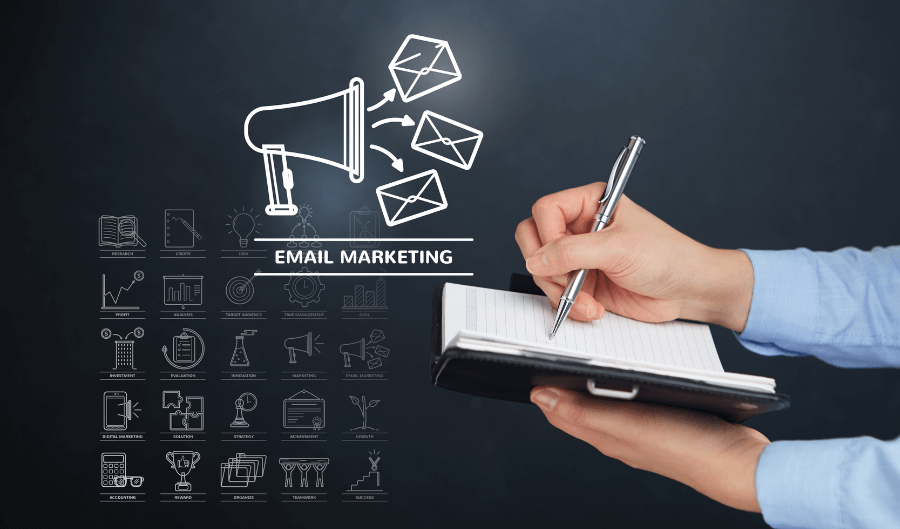
One of the most important things you can do to grow your business is to build an email list. Email lists allow you to stay in touch with your customers and prospects and provide a direct channel for marketing your products and services. But how do you go about building an email list? There are a few key strategies you can use:
First, make sure you have a strong opt-in form on your website. It should be prominently displayed, and it should be easy for visitors to find. Include a compelling call-to-action that encourages people to sign up.
Second, take advantage of social media. Include a link to your opt-in form in your bio, and promote your list on your posts. You can also run ads on social media that target people who are interested in what you have to offer.
Third, leverage your existing customer base. Ask current customers if they want to join your email list, and include an opt-in form on invoice receipts or thank-you pages.
Building an email list is essential for any business that wants to thrive in the digital age. By following these simple tips, you can start growing your list today.
Make email marketing an ROI workhorse.
As any marketer knows, email marketing is one of the most effective ways to reach out to potential and current customers. Email is 40 times more effective at acquiring new customers than Facebook and Twitter combined. However, to make email marketing an ROI workhorse, you should keep a few things in mind:
- Segment your list so you only send relevant information to interested people.
- Personalize your emails as much as possible. Studies show that personalized emails have 29% higher open rates and 41% higher click-through rates than those that are not.
- Track your results to see what is working and what isn’t.
Following these simple tips can make email marketing an ROI workhorse for your business.
Automated Email Marketing Software
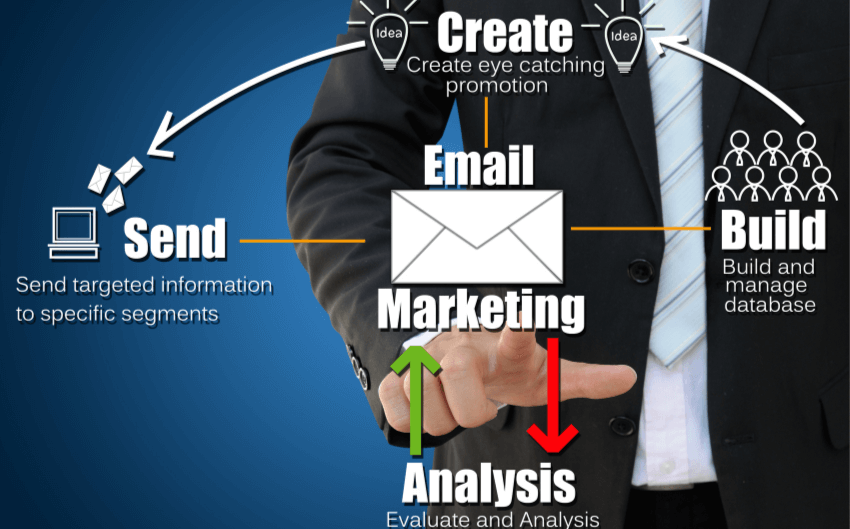
Email marketing software can automate sending out mass emails to customers or clients. It can be a useful tool for you who want to stay in touch with your customers regularly. The software can store customer contact information and email addresses and automatically generate and send personalized email messages. Email marketing software can also track which customers open and click on links in the email, allowing them to gauge the effectiveness of their campaign. In addition, automated email marketing software can help to save time and resources by automating the email marketing process.
Conclusion
Email marketing is still a powerful tool. It’s important to be aware of the changes in how people interact with email and ensure your emails reflect that. However, some basic tenets of email marketing will always remain true. Using email marketing strategies tips in this blog post, you can take your email campaigns to the next level and see better results. You can create successful email campaigns that reach your target audience and generate results.





